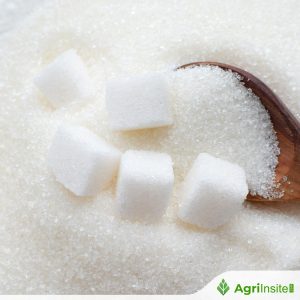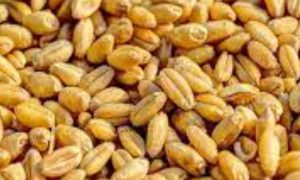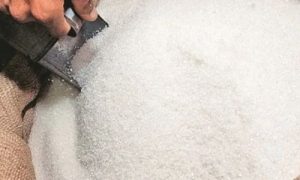Why Australia’s sugar industry is embracing innovation

Alan Hahn’s MycoTechnology is developing a honey truffle-based sugar substitute, 2,000 times sweeter than sugar, aiming to reduce obesity. Rising global sugar prices and health concerns pressure the sugar industry, which faces workforce shortages and competition from renewable energy projects. While some support sugar taxes, the industry advocates moderation and informed consumption instead of taxation.
In the US state of Colorado, food tech entrepreneur Alan Hahn is leading what he calls a “sweet revolution”, which he believes could help alleviate obesity – disrupting the sugar and non-sugar sweetener markets in the process.
Hahn is the CEO of MycoTechnology, an agricultural technology business that uses fermentation to enhance food and beverages. He heads a team that is developing a sweet protein derived from honey truffles, which can be converted into a natural sugar substitute and is up to 2000 times sweeter than sugar.
In theory, this could enable consumers to use less of the product and minimise the risk of sugar-laden diets that have long been linked to high diabetes and obesity levels.
Hahn is collaborating with other players in the food and beverage sector to turn the honey truffle discovery into a commercial reality.
Standing its ground
A combination of health concerns around sugar and non-sugar sweeteners – on top of sugar shortages due to weather and supply-chain issues in countries such as China, India and Brazil – is bringing natural sweetener innovations into the spotlight.
As disrupters such as MycoTechnology emerge, the sugar industry occupies an evolving, but potentially exciting, spot in the food and beverage, agricultural and biomass markets.
Following a spike in global sugar prices, the Australian Department of Agriculture, Fisheries and Forestry predicts the value of Australian sugar exports will remain stable in 2024–25 at A$2.2 billion, while sugar prices should “hold steady at elevated levels” because of ongoing international supply shortages throughout 2023 and 2024.
However, the sugar shortage has an economic impact on multiple industries.
Of these, the food and beverage industry is the most affected – an industry composed of confectionary, baked goods, beverages, dairy and processed foods.
However, pharmaceuticals, cosmetics, agricultural feed, alcoholic beverages and hospitality – which rely on sugar to differing degrees – are also impacted by the shortage.
Canegrowers is a not-for-profit organisation that represents the sugarcane regions of Queensland. Canegrowers CEO Dan Galligan says forward-pricing strategies should enable Australian canegrowers to lock in high prices for at least another two years.
Nevertheless, he concedes that the sugar industry is facing challenges on many fronts, including workforce shortages, high fertiliser costs and the likelihood of rising water and energy costs in coming years. “Those issues have certainly been a constraint,” Galligan says.
“Electricity prices have been and always will be a problem for canegrowers, given that about 65 per cent of the industry is irrigated, which means a lot of the cost of production goes into pumping water.”From our perspective and that of the farmers, we’re proud of our product. We think that in a healthy diet, there is no doubt that people can consume sugar safely. Our position as an industry is to not hide from it, to recognise there’s an issue and to talk to advocates about it.
— Dan Galligan, CEO Canegrowers
He adds that the trend towards converting Australian sugarcane plantations into macadamia orchards and other crops is making sugar mills less viable, while the ever-growing encroachment of property developers and renewable energy companies has left farmland as a “very contested landscape”.
“Renewable energy projects are certainly gobbling up agricultural land,” Galligan says.
Patrick Viljoen CPA, ESG lead at CPA Australia, emphasises the need to strike a balance between renewable energy development and safeguarding canegrowers.
The other elephant in the room is having to navigate a complex reputational and regulatory environment given increasing public awareness of the negative health effects of high sugar consumption – justifiably so, Viljoen says, because sugar has been directly linked to higher incidences of obesity.
In a new report indicating that 85 jurisdictions around the world have imposed taxes on sugar-sweetened drinks, the Australian Medical Association has renewed calls for Australia to follow suit, noting that Australians drink at least 2.4 billion litres of sugary drinks every year, or “enough to fill 960 Olympic-sized swimming pools”.
Sugar consumption projections from the Organisation of Economic Co-operation and Development (OECD) estimate that per capita consumption of sugar across the globe in 2020–2022 was 21.7 kilograms.
In comparison, Australian consumption was 42 kilograms per capita for the same period – higher than the US (30.8 kilograms), the UK (22.5 kilograms), Mainland China (10.4 kilograms), India (18.9 kilograms), Vietnam (22 kilograms) and New Zealand (40.6 kilograms).
Rather than brushing aside such concerns, Galligan says the sugar industry has adopted the stance that there is “clearly an obesity challenge in Australia” and a need for informed consumer knowledge around consuming sugar in moderation as part of a nutritious and healthy diet.
“From our perspective and that of the farmers, we’re proud of our product,” he says. “We think that in a healthy diet, there is no doubt that people can consume sugar safely. Our position as an industry is to not hide from it, to recognise there’s an issue and to talk to advocates about it.”
At the same time, Canegrowers opposes a tax on sugar on the grounds that it would be “unfair” and make a scapegoat of sugar farm operators and regional communities, costing jobs without being a silver bullet for obesity reduction.
Viljoen disagrees. “Worldwide consensus would not concur, with several other jurisdictions already having imposed such a tax. Balance is key,” he says.
For decades, traditional sugar has also faced competition from substitute sweeteners that have been branded as “low calorie”, including the artificial sweetener aspartame and sugar alcohols, such as erythritol and xylitol. Plant-based sweeteners such as stevia, monk fruit and allulose are more recent competitors.
Significantly, some sugar substitutes are having to defend their own health credentials. Aspartame has been used in a range of food and beverage products since the 1980s, including some diet drinks, chewing gum, ice cream and yoghurt.
In July 2023, aspartame was declared as “possibly carcinogenic to humans” by the International Agency for Research on Cancer (IARC), the World Health Organization’s (WHO) cancer research arm.
In releasing the findings, Dr Francesco Branca, director of the Department of Nutrition and Food Safety for WHO, notes that “the assessments of aspartame have indicated that, while safety is not a major concern at the doses which are commonly used, potential effects have been described that need to be investigated by more and better studies”.
For now at least, the IARC concludes that currently available data does not warrant a change to the acceptable daily intake of aspartame of 40mg/kg body weight.
Recent research has also raised some concerns about erythritol, with a study published in Nature Medicine pointing to increased association with blood clotting and cardiovascular disease.
In separate research to the aspartame report, the WHO has also debunked theories that artificial sweeteners can be used to control body weight, with its research concluding that the use of non-sugar artificial sweeteners “does not confer any long-term benefit in reducing body fat in adults or children”.
Irrespective of debates over the merits of sugar versus non-sugar substitutes, Sugar Research Australia – the nation’s specialist sugarcane research organisation – is committed to the evolution of sugarcane production and uses.
This is an important point, Viljoen says. “Diversification of use is key.”
Hywel Cook, general manager of Industry Services at Sugar Research Australia, believes the sugar conversation will increasingly move on from diet-related issues to an emphasis on long-term product innovations.
“Of course, as an industry we don’t want people over-eating our product,” he says.
“We want people to use common sense in how much they eat. Sugar can be used for a whole heap of other products rather than just as a raw food material.”
To this end, Sugar Research Australia is engaged in collaborative research projects that include breeding sugarcane plants for biofuels, enhancing genetic gains in cane variety breeding and tackling biosecurity risks to sugarcane production. To go from a traditional sugar mill to one of these bio-precincts requires a lot of investment. The mills, the growers, new investors, they’re all interested. These investments are in multiples of hundreds of millions of dollars.”
— Hywel Cook, Sugar Research Australia
Cook says the beauty of sugarcane as a biomass crop is its versatility – apart from being used for sugar, the molasses and cane juice can be turned into ethanol, while mills can burn the fibre to make electricity as an energy source for the mills and to put excess energy back into the grid.
“The big opportunity is to make that energy generation even more efficient.”
Cook says the development of greener products such as biofuels, as part of a broader bio-precinct approach, clearly presents an important opportunity for sugarcane producers. “To go from a traditional sugar mill to one of these bio-precincts requires a lot of investment,” he says.
“The mills, the growers, new investors, they’re all interested. These investments are in multiples of hundreds of millions of dollars.”
There is already a technical pathway to make ethanol and use it as the feedstock to produce biofuels.
“However, to maximise the amount of ethanol and to make enough sustainable aviation fuel, you need to invest in second-generation ethanol generation,” Cook says. “That’s new technology.”
Viljoen suggests that ethanol conversion could be a viable option. “The bigger picture issue is that this would need to go hand in glove with the aviation industry driving hard on efficient use of fuel. In the absence of this, it would be shifting the issue elsewhere,” he says.
Galligan is also excited at the prospect of biofuel innovations, noting that sugar producers stand to gain if, in the future, biofuels are required in similar volumes to the conventional aviation fuel loads of today.
“If you did it all from sugarcane, you’d need a lot more sugarcane. The industry would need to expand significantly to service that demand.”
The ideal scenario for growers, according to Gilligan, would be for a sustainable aviation fuel industry to complement existing sugar production for use in foods and beverages.
Fortune favours the bold
Although question marks exist around the health impacts of sugar alternatives, it remains a huge and growing market, with market intelligence company Future Market Insights predicting that the sugar substitutes market is likely to be valued at US$28.57 billion (A$42.52 billion) by 2033, up from US$17.13 billion (A$25.50 billion) in 2023.
Such numbers up the ante on sugar producers to seek out new markets. Cook says canegrowers and millers are typically split about their embrace of innovation, but they resist change at their peril.
“There’s a whole group of growers or millers who want this change to happen yesterday. At the other extreme, you’ve got a group who are saying, ‘No, let’s just keep doing what we’re doing. We are good at what we do. Why would we want to change?’”
Cook says such an approach could leave the industry exposed, whether it is at the hands of an ambitious macadamia farmer, a major solar farm operator or a long-time market player.
Innovators such as MycoTechnology prove Cook’s point as companies queue up to offer new and hopefully healthier alternatives to sugar and artificial sweeteners, with the latest trends including liquid grape sugar and date-based syrups and pastes.
In 2023, Coca-Cola launched tests of a Diet Coke variant that replaces artificial sweeteners with a blend of monk fruit and stevia – putting a new spin on the beverage giant’s famous slogan “You can’t beat the real thing”.
To read more about the news about the Sugar Industry continue reading Agriinsite.com
Source Link : https://intheblack.cpaaustralia.com.au/innovation/why-australias-sugar-industry-embracing-innovation















